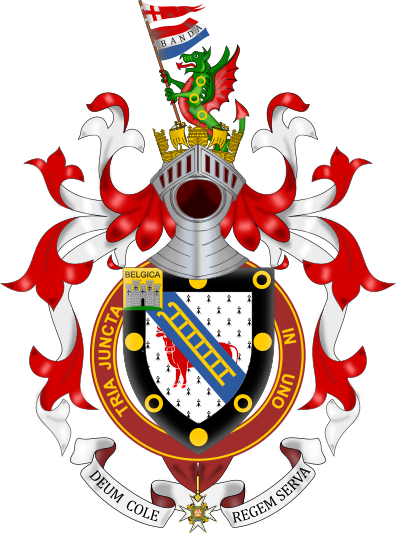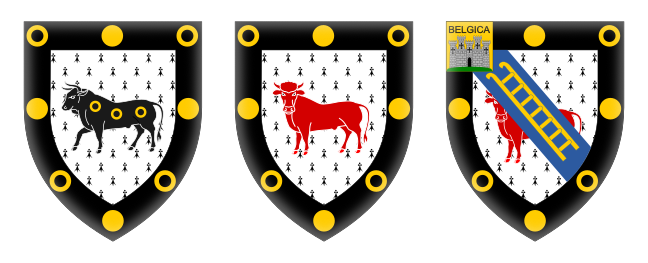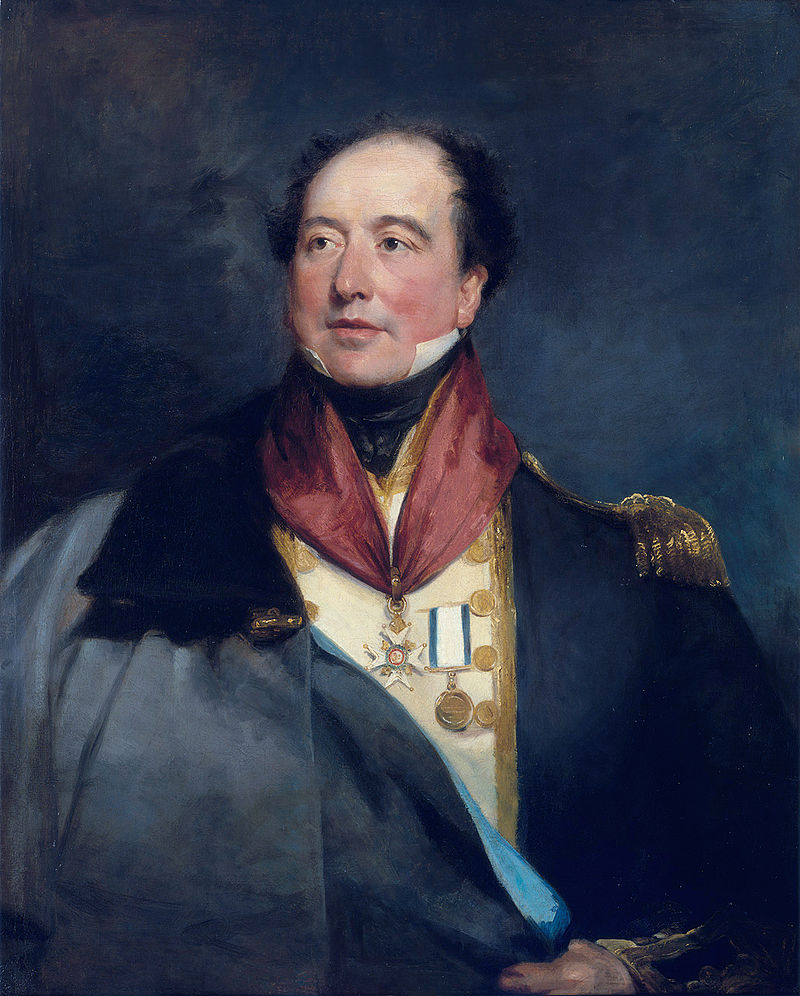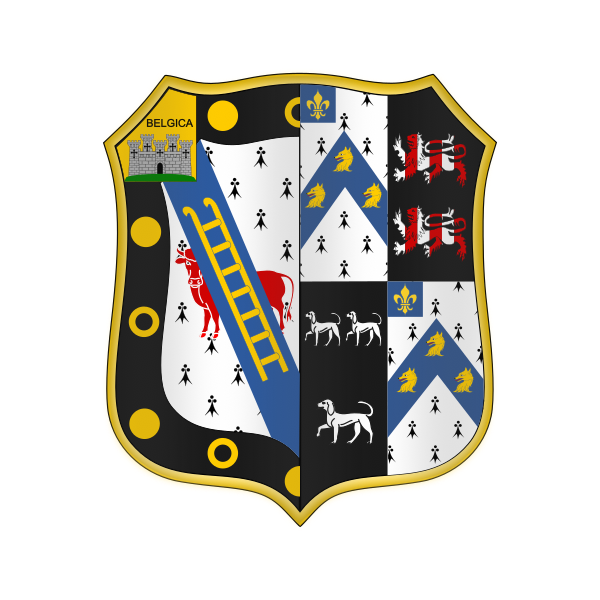 |
BlazonShield: Ermine, a bull statant at gaze Gules, on a bend Azure a scaling ladder Or, all within a bordure Sable charged with four roundels between four annulets Or, and on a canton Or a mount vert and thereon a castle with five towers Proper, surmounted by the name BELGICA in Sable. The shield is encircled by the circlet, with badge pendant, of a Knight Commander of the Order of the Bath, military division. Crest: out of a naval crown Or a demi-dragon rampant Vert and Gules, charged on the body with three annulets Or, and holding a staff, hanging from which is a flag barry of three Gules, Argent and Azure, the Argent charged with the word BANDA in Sable; above the flag at the peak a pennon of St. George. Motto: Deum Cole, Regem Serva |
Captain Sir Christopher Cole, KCB, was a Royal Navy officer and MP for Glamorganshire. He was born in Marazion, Cornwall, on 10th June 1770 and was sent to sea along at the tender age of 9, in 1780, on board HMS Royal Oak where his brother John was chaplain. Cole served in the American and French Revolutionary Wars and the Napoleonic Wars and rose to the rank of captain. His most famous exploit, during the Napoleonic Wars, was in 1810 in the East Indies, where he led an expedition to seize the island of Banda Neira from the Dutch, which he did after capturing the island's Fort Belgica. He was knighted (as a knight bachelor) in 1812.
Sir Christopher's naval career ended in 1814 with the decommissioning of his last ship, HMS Rippon. In the following year he was made a Knight Commander of the Order of the Bath, and, on 15 April, he married Lady Mary Lucy Talbot, née Fox-Strangways, widow of Thomas Mansel Talbot and daugther of the 2nd Earl of Ilchester. It is through this marriage that Cole came into possession of Penrice Castle, and he also had a home at Lanelay Hall in Pontyclun.
Sir Christopher served as MP for Glamorganshire from 1817 to 1818 and 1820 to 1830, when he made way for his stepson, Christopher Rice Mansel Talbot. He died in 1836 at Laneley Hall but is buried at St.Andrew's Church, Penrice. His heraldic funeral hatchment is situated in Llantrisant Church near Pontyclun and not at the site of his burial.
The arms of Sir Christopher Cole as seen at Llantrisant Church and Singleton Abbey in Swansea show a red bull standing (statant) and looking out towards the viewer (at gaze) charged with gold annulets (rings) and bezants (gold roundels). However, Burke's Landed Gentry described the bull of the Coles of Marazion (Sir Christopher's family) as black, walking (passant), and charged with three gold annulets. Both red and black bulls appear in the arms of other Cole families in England and Ireland, but it is not clear why Sir Christopher's doesn't match that of his immediate family. The answer will lie in the College of Arms, but it's possible that the original arms were never officially granted or recording for this family and so matters were regularized with a new grant of arms for Sir Christopher.
 |
| The arms of Cole of Marazion according to Burke's Landed Gentry (left), Sir Christopher's arms unaugmented (centre) and augmented (right) |
At some point after 1810, Sir Christopher's arms were "augmented" - given new honorific additions - to celebrate his military accomplishment at Banda Neira. Other examples of augmentations from this period include those of Lord Nelson and the Duke of Wellington. In Sir Christopher's case the augmentation consists of three elements : a blue bend charged with a scaling ladder, a canton with a representation of Fort Belgica below the word "Belgica", and a flag pole in the crest flying St.George's pennant over a Dutch flag bearing the word "Banda". Unfortunately the augmentation, especially the blue bend, has the unfortunate effect of obsuring much of the original arms (Lord Nelson's arms suffered a similar fate).
Sir Christopher had no children, so the use of these augmented arms died with him.
 |
| Sir Christopher Cole Ⓒ |
 |
| Sir Christopher's arms impaled with those of his wife, Lady Mary Lucy Fox-Strangeways (copied from arms at Singleton Abbey) |